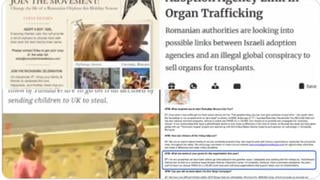
Does Bob Cratchit, a character from the Charles Dickens classic novella "A Christmas Carol" make the equivalent of $530.27 a week, which is more than the current weekly federal minimum wage in the United States? Probably not: The novella, set in Victorian-era London, states that Cratchit is paid 15 "bob" -- a colloquial term for British shillings -- per week for his work as a clerk for his tightfisted boss Ebenezer Scrooge.
Lead Stories reached out to several Dickens scholars who informed us of the difficulty of accurately converting Cratchit's pay to today's currency. However, they also clarified that while the figures used in the claim are most likely overblown estimates, the bigger picture is not too far off the mark. Cratchit is underpaid, most likely overworked and certainly struggling to support all of the needs of his large family, but he is literate and fares much better than the majority of London's workers in those days.
The claim, which was originally published as a tweet, also appeared in a Facebook post (archived here) published on December 19, 2021. The post featured a screenshot of the tweet, which read:
Time for your annual reminder that, according to A Christmas Carol, Bob Cratchit makes 15 shillings a week. Adjusted for inflation, that's $530.27/wk, $27,574/yr, or $13.50/hr.
Most Americans on minimum wage earn less than a Dickensian allegory for destitution.
The Twitter user who made the screenshotted tweet later corrected himself, saying that his tweet was a result of "super-sloppy Googling." He cited this forum post as his source.
This is what the post looked like on Facebook on December 22, 2021:
(Source: Facebook screenshot taken on Wed Dec 22 16:16:47 2021 UTC)
For a better understanding of the world of "A Christmas Carol," Lead Stories reached out to several Dickens scholars. Since the year is not stated in the story, we contacted Natalie McKnight, a dean and professor of humanities at Boston University, who provided us with an estimate. In an email sent on December 21, 2021, McKnight said:
So, A CHRISTMAS CAROL seems to be set around the time it was written (it was written in 1843, so let's say it's set between 1835-1843). It definitely echoes some industrial revolution and Utilitarian thinking (from Scrooge), both of which were strong at that time. So that would be the rough date to use in estimating what Bob's wage would equate to today.
The 1840s are often referred to as "the hungry forties," and were "the decade of a significant financial crisis, the Irish Potato Famine, and other challenges" said Sean Grass, chair of the Department of English at Rochester Institute of Technology and current president of The Dickens Society. In his email to Lead Stories sent on December 22, 2021, Grass noted that compared to the "truly destitute" characters in Dickens' other published works, Cratchit is "paid well enough to just barely support a large family in decent (but not thriving) circumstances."
Joel Brattin, a professor of English at Worcester Polytechnic Institute and past president of The Dickens Society, expressed a similar sentiment in an email to Lead Stories on December 22, 2021:
... it is important to note that Bob Cratchit was not destitute. Rather, he was paid little, and had a large family (six children) to feed and clothe. Mrs Cratchit wears 'a twice-turned gown,' suggesting the work involved in keeping the clothing usable. If one tries to support a family of eight on what is essentially a minimum-wage job, one will certainly encounter difficulties.
The claim's salary estimates are a more complicated matter, as historical currency conversions are not an exact science. Grass explained further:
It's hard to frame a true estimate of what pounds and shillings then would be 'worth' today, though many scholars have tried. The challenge is, assessing inflation generally means comparing the cost of a particular item now vs at some point in the past. But we don't buy the same things now that people bought in the 1840s. How much are reading candles now? How much were light bulbs then? Horseshoes? Gas prices? And so on.
During its time as a form of British currency, one shilling was worth one-20th of the British pound. Therefore, 15 shillings was three-quarters (or 0.75) of a British pound. Grass estimated that one British pound in the 1840s is worth about $500 in today's U.S. dollars, meaning Cratchit would make $375 per week today.
Grass also noted that the claim's calculation of wage-per-hour seems to be based on a 40-hour workweek, which is the standard before overtime for many workers today. However, he said that assumption is erroneous:
... the post's math I think probably is assuming (as we do nowadays) a 40 hr work week. This would mean that Bob Cratchit, at $375/wk, is making $9.38/hr. But Bob almost certainly isn't working so little. This was long before the regularization of the 40 hr work week, and it's clear that Scrooge only even gives Bob Christmas day off grudgingly. More likely, Bob is working Monday-Saturday, at least 10 hrs/day. This makes his work week, at a conservative estimate, 60 hrs rather than 40. At 60 hrs/wk, Bob is making only $6.25 an hour, substantially below the current federal minimum wage of $7.25.
As Grass pointed out, the federal minimum wage in the U.S. is $7.25 an hour. Before taxes, a federal minimum wage worker putting in 40 hours per week today would make $290 every week. Although Grass' estimate of $375 is higher than this figure, it is not as drastic as the $530.27 stated in the claim. Still, Grass said that Cratchit makes "just enough to cling to the bottom" of England's small middle class, who were not as poor as the large demographic of the English who were barely surviving but not as rich as "substantial property owners."
Thus, while the figures used in the claim are most likely inaccurate, the gist of the claim is correct according to Grass:
The strict comparison of exactly how much he made, adjusted for inflation, means far less than the fact that, in today's economy, a worker making $13.50/hour would--like Bob--be earning substantially more than a high proportion of low earners but would still be suffering financially. In this sense, A Christmas Carol remains a relevant indictment of a modern society in which someone can still be relatively poor, maltreated, and underpaid despite being substantially better off than the poorest. What Scrooge gives Bob in the end by giving him a pay raise is that all-too-elusive thing: the dignity of work, the opportunity to live not just decently (in the lowest sense) but also proudly, able to take care of his household and his sickly child, getting him the care he needs. We should all have at least that--at least.
Lead Stories also reached out to economic historians based in the United Kingdom for more information about the claim. We will update this story with any relevant responses.














